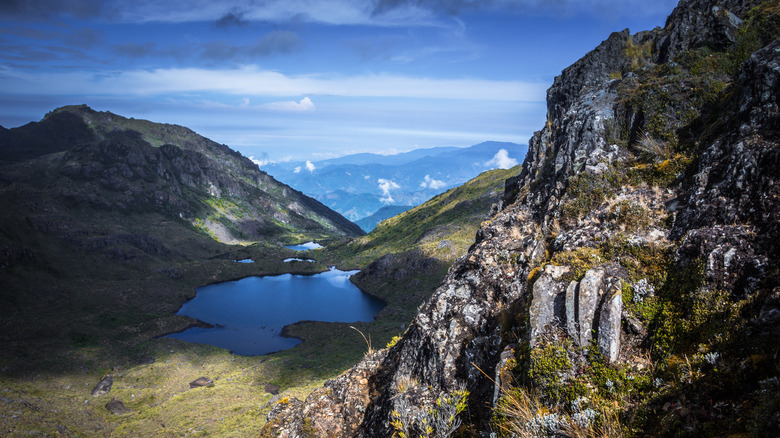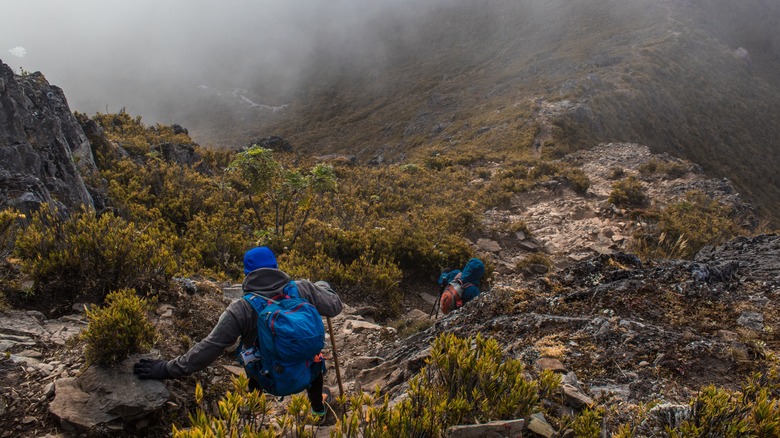When you think of a vacation to Costa Rica, you probably envision a tropical escape to a picturesque beach or a national park full of wildlife to explore. You may have visions of colorful drinks on a poolside lounge chair and warm, sultry breezes. What you probably don’t imagine is summiting a mountain where the highs only reach between 40 and 65 degrees Fahrenheit and the lows sometimes drop below freezing. That said, it’s worth putting down that fancy cocktail and grabbing your hiking boots and a warm jacket to head out to hike to the top of Cerro Chirripó, the tallest mountain in Costa Rica. It sits inside the 194-square-mile national park of same name.
Chirripó means “land of eternal waters” because of the many pools and streams in the area, which were created by glaciers thousands of years ago. Summiting this mountain means you’ll get a 360-degree view of the Talamanca Mountains and some incredible scenery as you ascend and descend. The trail, which begins in the little village of San Gerardo de Rivas, will take you up 7,218 feet in an out-and-back hike of 12.4 miles. It’s not easy, but there is a place to stay partway up, and the trail is well-marked. This hike is absolutely worth it, but there is a lot of information you need to know before you go.
What to know before you hike to Cerro Chirripó

The best time to try this hike is between January and April, which is the dry season, but be prepared for rain anyway. As we mentioned, the hike begins at San Gerardo de Rivas, about 92 miles by car from San José. There are shops there where you can get supplies to bring up with you. This challenging hike generally takes 8-10 hours to go up and 5-7 hours to return, depending on conditions and skill level. You can book a park permit up to six months in advance here (and do it as early as possible, as it books quickly), which is $18 per person, per day.
If you’ve summited any mountain, you know it can be much colder up in higher elevations, even in a tropical area. Bring warm clothing and a waterproof jacket, as well as water, sunscreen, and food. It’s recommended to have sturdy hiking boots with supportive ankles, as the trail can be steep and rocky. If you stay at Crestones Base Camp, which we’ll tell you about in a moment, bring an extra blanket for warmth, as they only provide thin sleeping bags some light blankets. You cannot camp on the trail.
The hike to the summit

Once you have the park permit, you will receive an email from [email protected] to schedule lodging and food at Crestones Base Camp. You’ll also make a plan to pay for the reservation at a Costa Rica Banco Nacional location. If you don’t receive an email, reach out to them with your permit information. The price is $35 per night, per person, with food costing extra.
Crestones has 52 beds, as well as bathrooms, showers, towels and soap, and a dining room. You’ll have to stay the day before your trek in San Gerardo de Rivas and check in with the permit office by 4 p.m. the day before your hike. You’ll also need to check in at the base camp office the day before by 5 p.m.
The trailhead is right near the center of town, and it’s 9 miles to the base camp. It’s steep and sometimes rocky, but there are bathrooms and water at kilometer 7.5 on the well-marked trail. (The trail will be marked in kilometers.) From Crestones, it’s 3.4 miles to the summit, and many set out very early to watch the sunrise from the top. With incredible views and a sense of accomplishment, you’ll remember your trip forever. Before you go, check out Explore’s tips for hiking safety.

